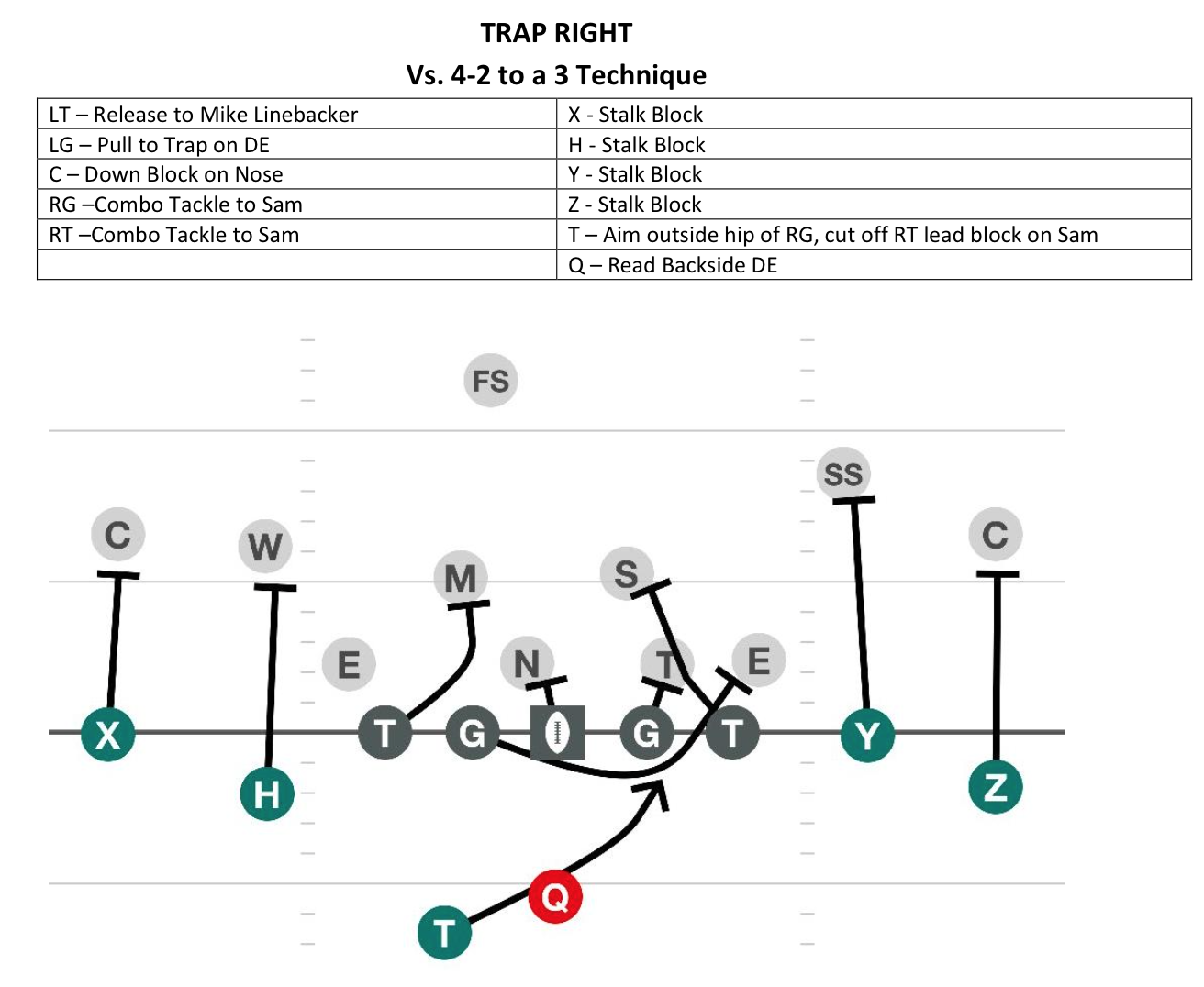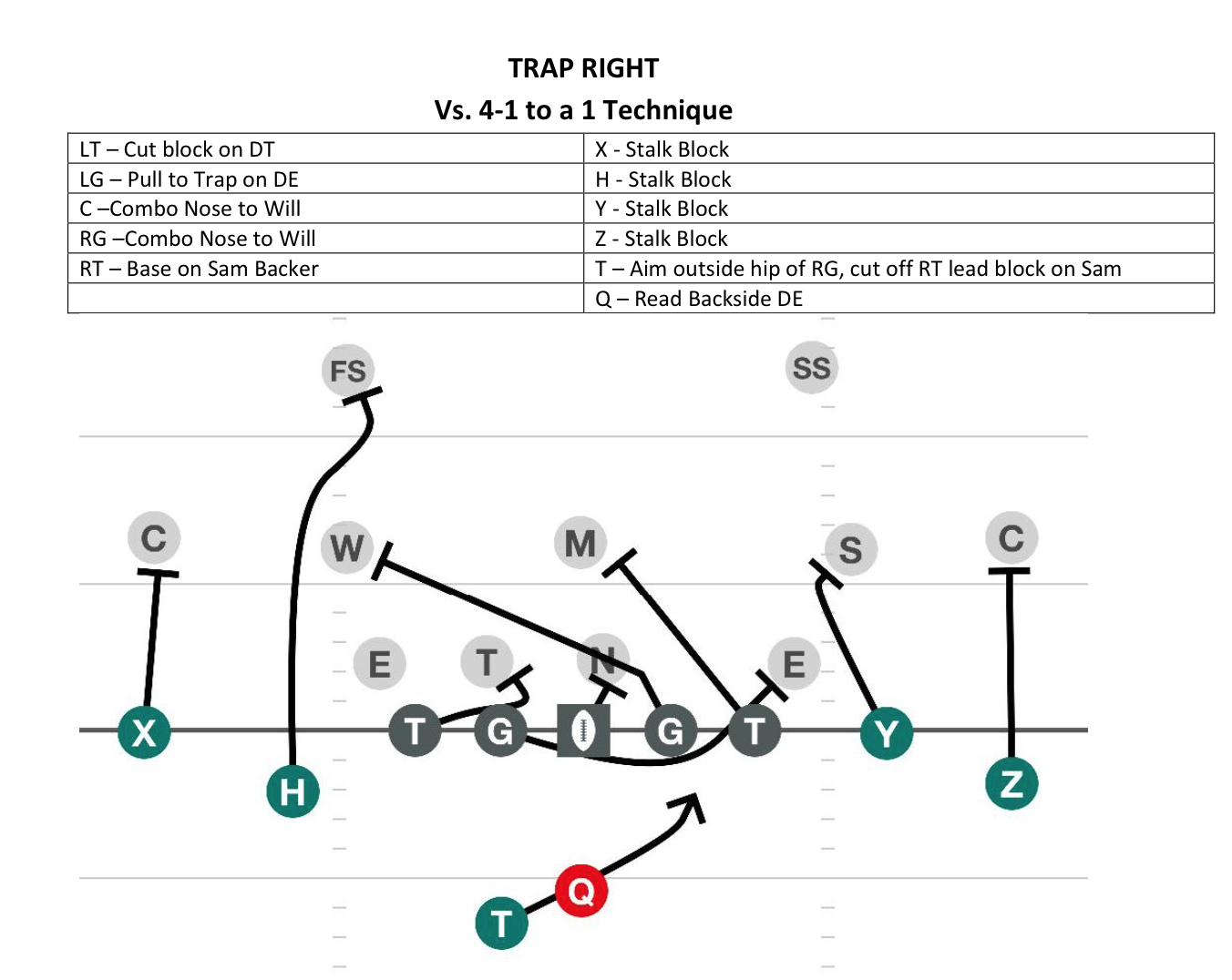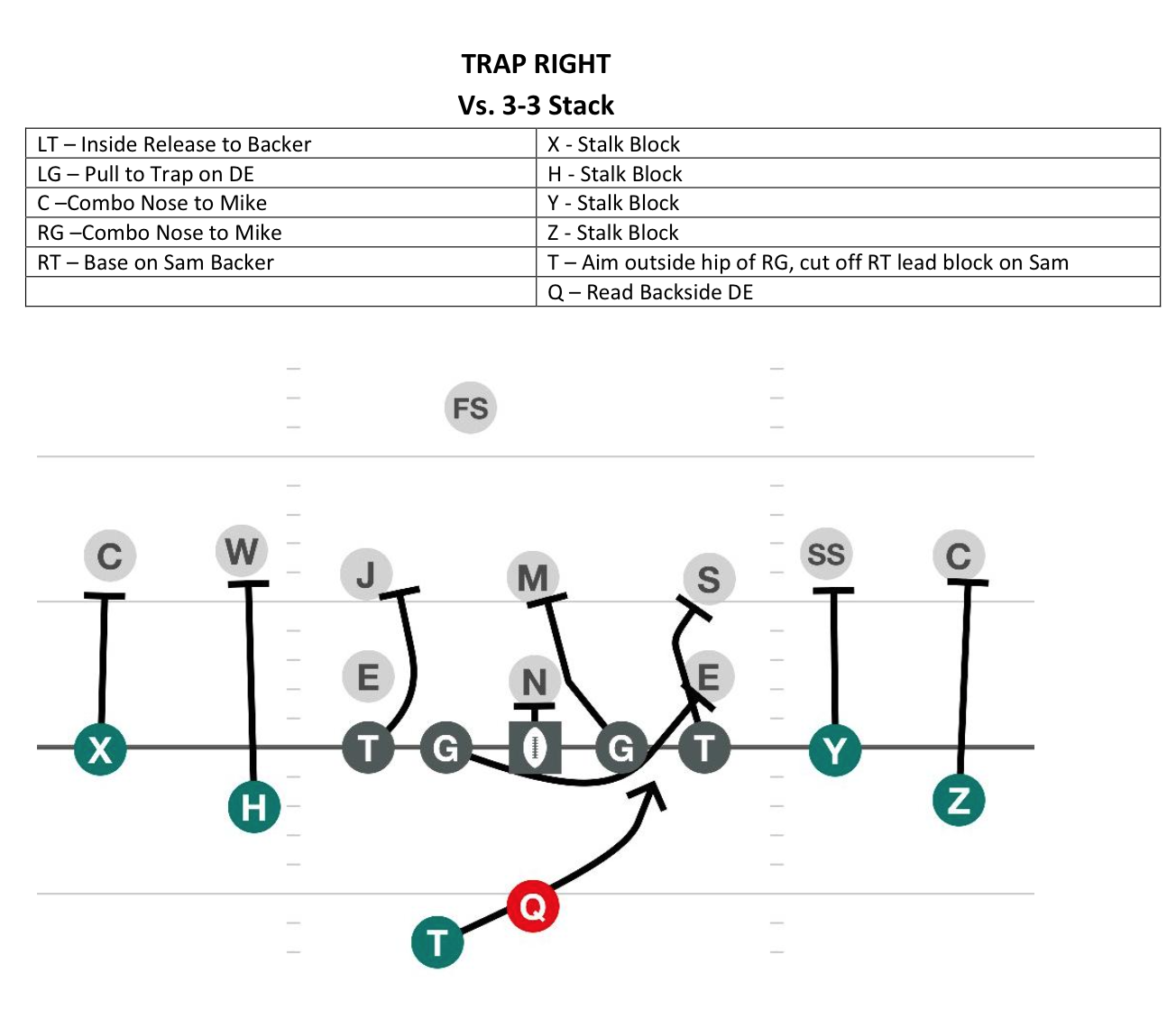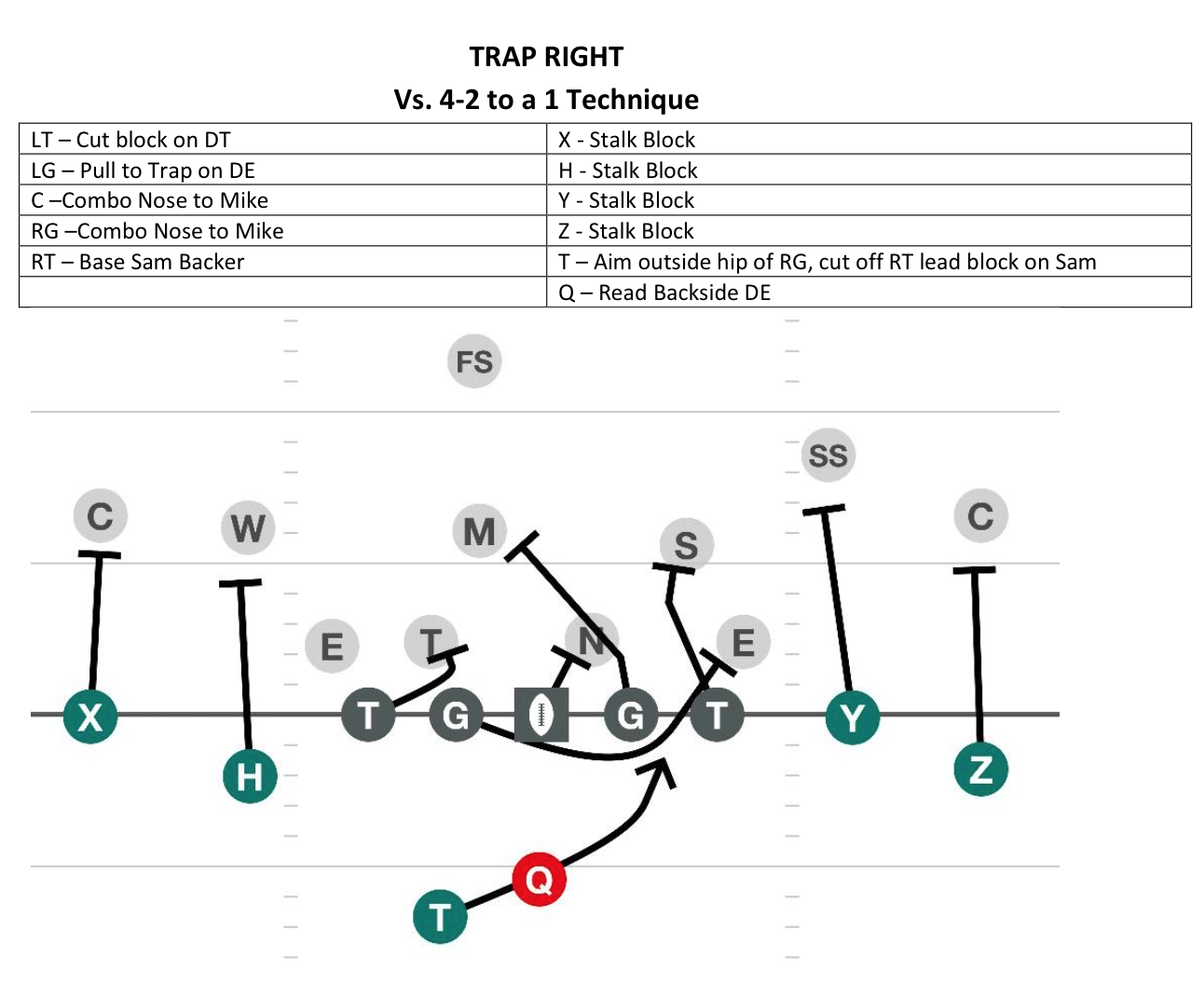TRAP
Today we are going to continue with our series on the run game and take a look at the Trap. Let’s get into it!
Before we get going, two things. First, if you want to perfect your run game, you have to check out over 7 hours of video content in the Spread Running Game Academy. Second, if you haven’t yet downloaded the spread running game playbook, click here to download it now. Like all of my playbooks it is, and always will be, free.
Ok, let’s look at trap:
Here are the things I love about the Trap.
Depending on the front, there is a good chance to get a true double team at the point of attack. Remember, because of the way we protect in our passing game and to limit head and neck contact as much as possible, we prefer the two point stance for our linemen. That means we are trading a bit of leverage, for the ability to move backward and laterally with agility. (We can debate this later…I have also run this offense out of a 3 point stance. But, I think with the way our game is evolving and the style we want to play, the 2 point stance is the way to go). I will admit, however, that playing out of a 2 point can limit your ability to generate movement at the point of attack with 1 on 1 base blocks. This is especially true if you have smaller linemen. So, any time we can get a true double team at the point of attack, it gives us a chance to generate vertical movement
The Trap is a great compliment to the Dart. The DE is more than likely one of the best players on the field. On Dart, we trick him by pass setting and running underneath him. Then we come back with trap and hit him out with a quick pull. He is forced to defend a variety of blocks. All of that slows him down on his pass rush.
The trap is adaptable. Like Dart and Zone you can be really creative with trap blocking. You can run your QB, you can throw screens or quick routes. Here are a few ways you can use the scheme to add wrinkles to your run and play action game
Ace QB Trap Right – your RB fakes across the formation and picks up the DE. QB pulls the ball and runs the trap 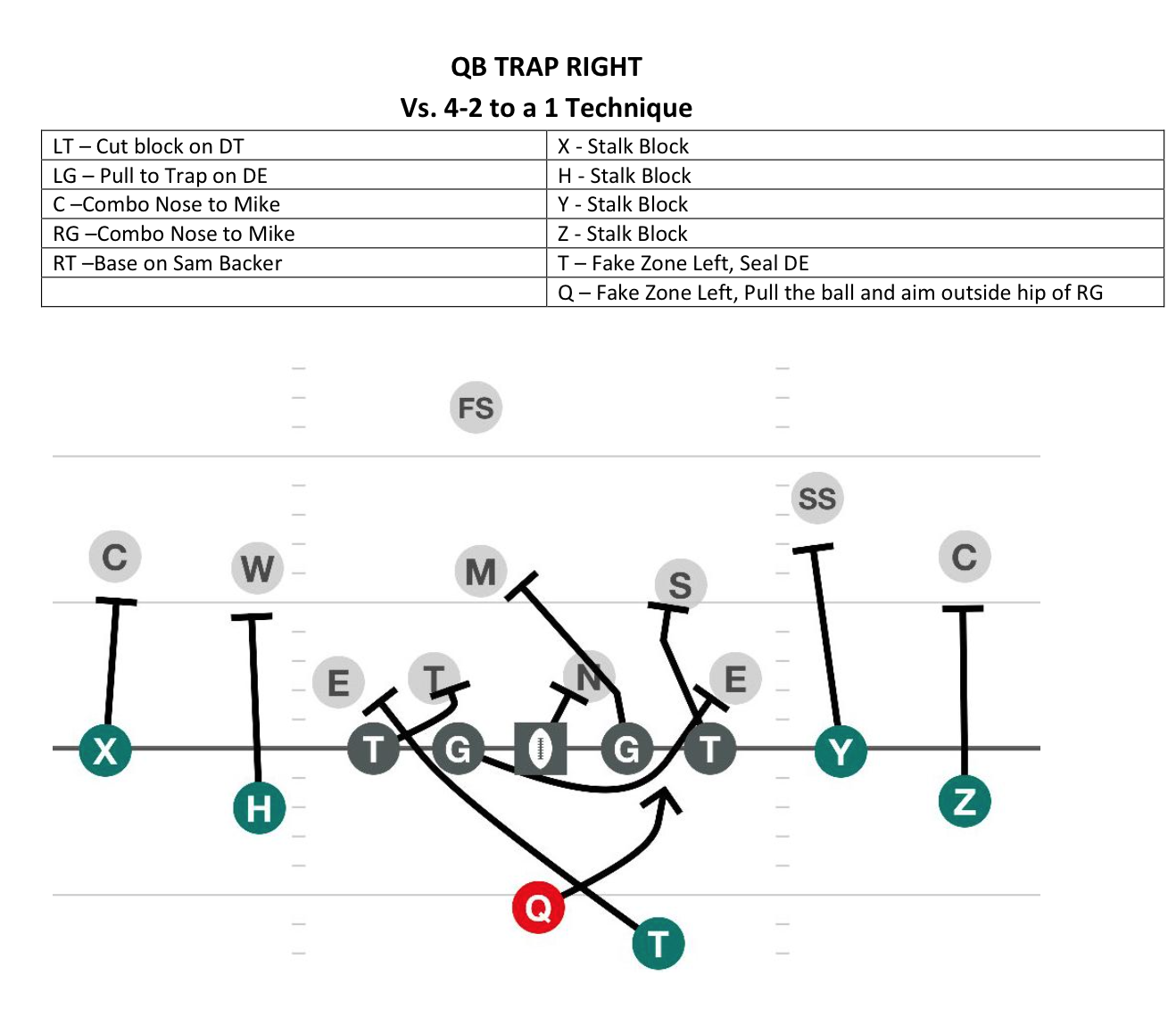
Ace H Fly QB Trap Right – Instead of reading the backside, read the front side. Send your RB to pick up the backside DE, have your QB ride the H. The DE will widen to take away the fly sweep which will set up the trap block perfectly,the QB pulls the ball and runs the Trap though a massive gap.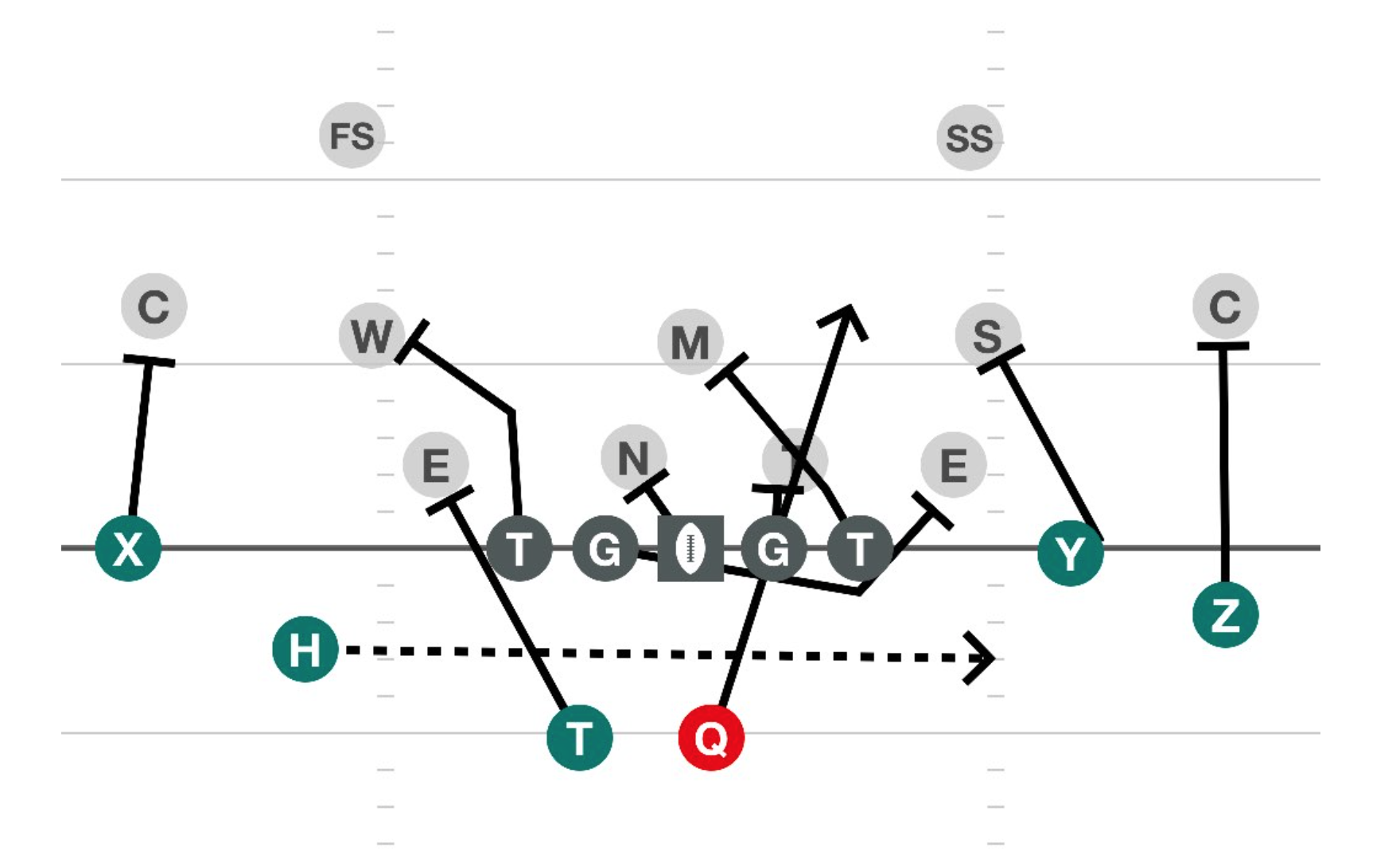
Ace Trap Right Red – The QB will decide if he has good leverage on any of the slant routes. If he does, throw it. If not, give the trap. You can also run Ace QB Trap Red. This gives you a little more protection because your RB can pick up the backside DE 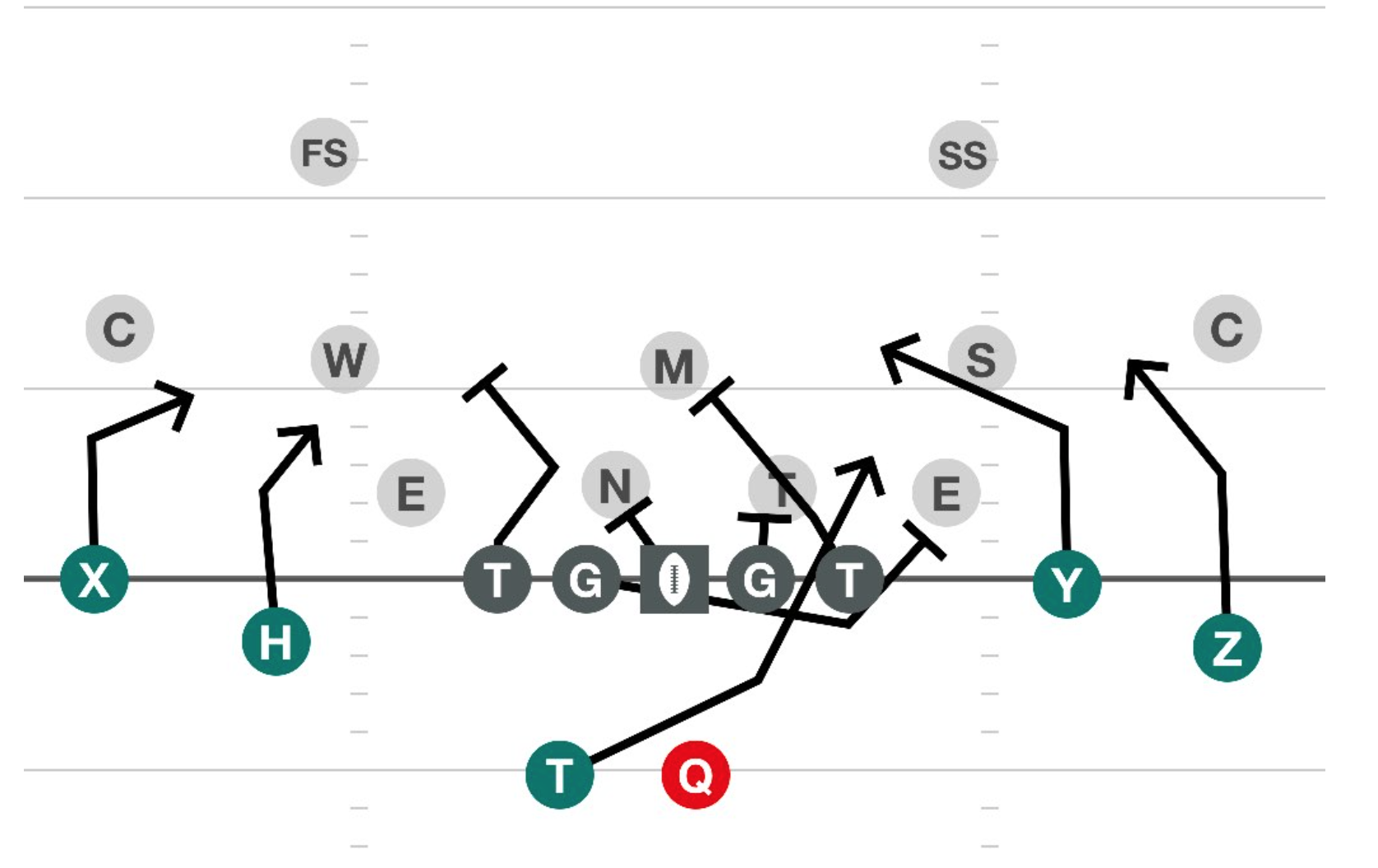
This is a cool little wrinkle – Trips Right H Fly Trap Right Shovel. The H Fly motion should hold the backside DE. The QB takes a few steps playside to widen the playside DE and set him up for the trap block, then slip the shovel right underneath him as he gets kicked out. 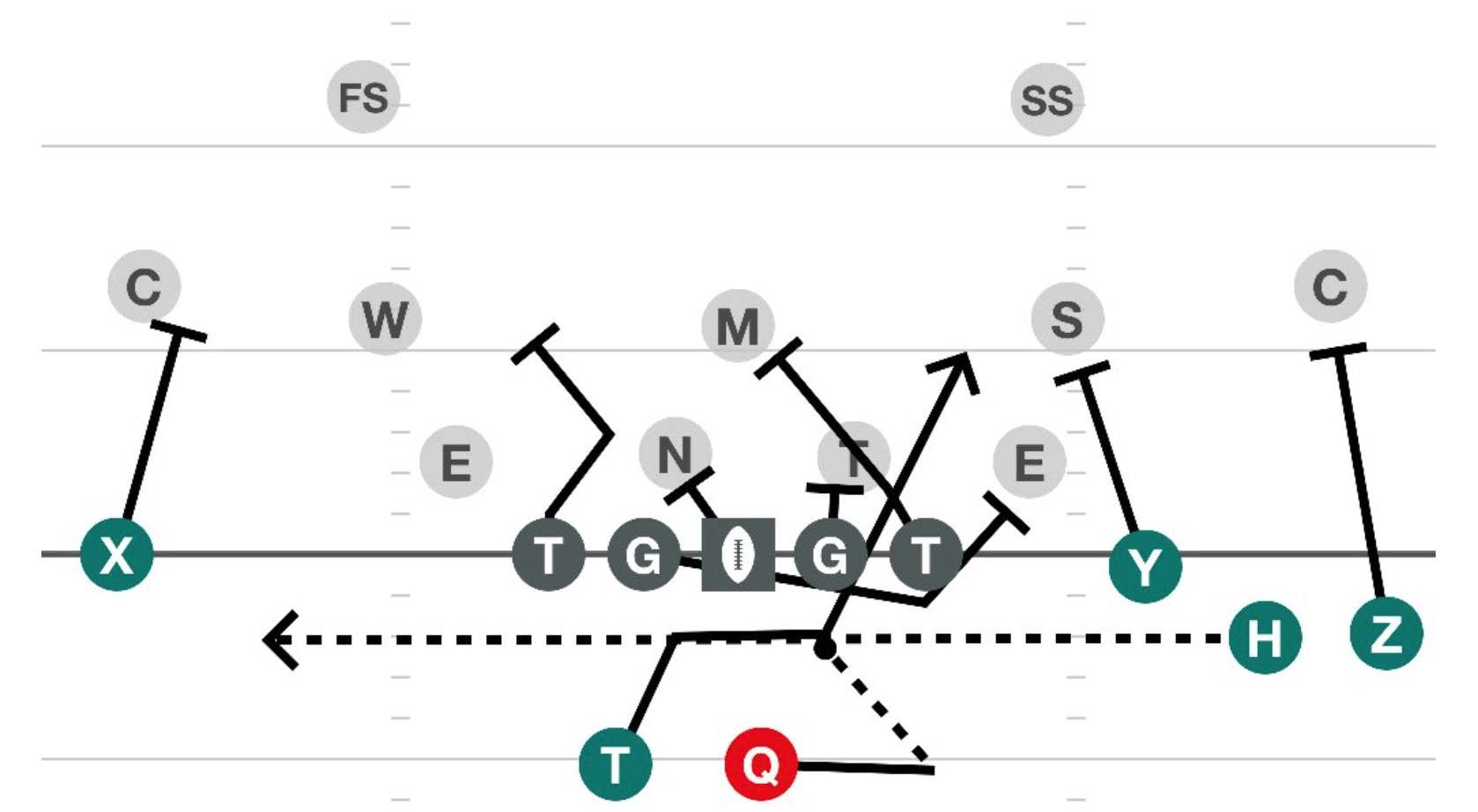
You don’t have to install all of these wrinkles. These are just a few examples of how you can use a blocking scheme in multiple ways. If the linemen already know how to block it, these wrinkles don’t take very long to install. Little twists like this are a lot of fun for you, your staff, and your kids. Plus, you might just get a few big plays out of it.
The Trap is versatile. You can call it against almost any front. Remember, if you are going to be successful in the passing game you have to devote most of your practice time to throwing the ball. So, we need versatile, adaptable, simple running plays that work from week to week. The trap is perfect for this. I think it is even a bit more versatile than Dart, because it works really well against a stunting 3-3. If you can teach your tackles to down block the DE if he slants inside, it’s actually my favorite run play against a 3-3. Here are a few examples of trap various fronts and shades
RULES AND SKILLS:
The rules for the linemen are easy and repeatable.
Playside Tackles – They need to be athletic, when the tackle releases inside to try to get up to the backer, a well-coached DE is going to stay attached to the hip. Be athletic and rip up to the next level and get to the backer. If there is a B gap player, the tackle and Guard will double team up to the backer.
Center – The Center has to handle the Nose on this play. Depending on defensive alignment, we may get a double team to help him out. We can’t allow penetration to knock off our pullers. If your Center is 1 on 1, it is ok to cut the Nose on this play.
Backside Tackle – This is the most important block on the trap play. If there is a backside 3 technique, have to be able to cut the backside 3 technique and/or cut off the backside linebacker. If you can’t get that done there are a couple of options. You could allow your linemen to make a “switch” call where the guard and tackle exchange responsibilities. The guard will stay home and the tackle will Pull to Trap. Or, you could let your QB check opposite and run the ball away from the down linemen that is giving you trouble.
Backside Guard – Pull to trap. Stay flat and aim for the inside shoulder of the DE, try get an inside out block and push him away from the Line of Scrimmage toward the backfield.
QB Read – In order for your running game to be truly effective, you have to trust your QB on the backside read. If the DE crashes teach your QB top pull the ball and follow the block of the slot receiver.
RB – Make sure his alignment is correct. I like him 1×1 from the QB so he can hit the hole downhill. On shovel and QB trap he can cheat up to even with the QB. This may seem like we are giving something away with alignment, but we align even with the QB on quick game and stretch also, so the defense really doesn’t get a read on what we are doing.
CONCLUSION
This is a downhill play that gives your linemen great angles. It also gives you great flexibility and great opportunity to be creative. It hits a little quicker than Dart and it’s a great compliment to the passing game. Install it. You’ll love it. As always, please feel free to email me at Erick@winwiththepass.com if you have any questions. I love hearing from all of you! Have a great week. Next week we are going to look at the Speed Option.
Erick


